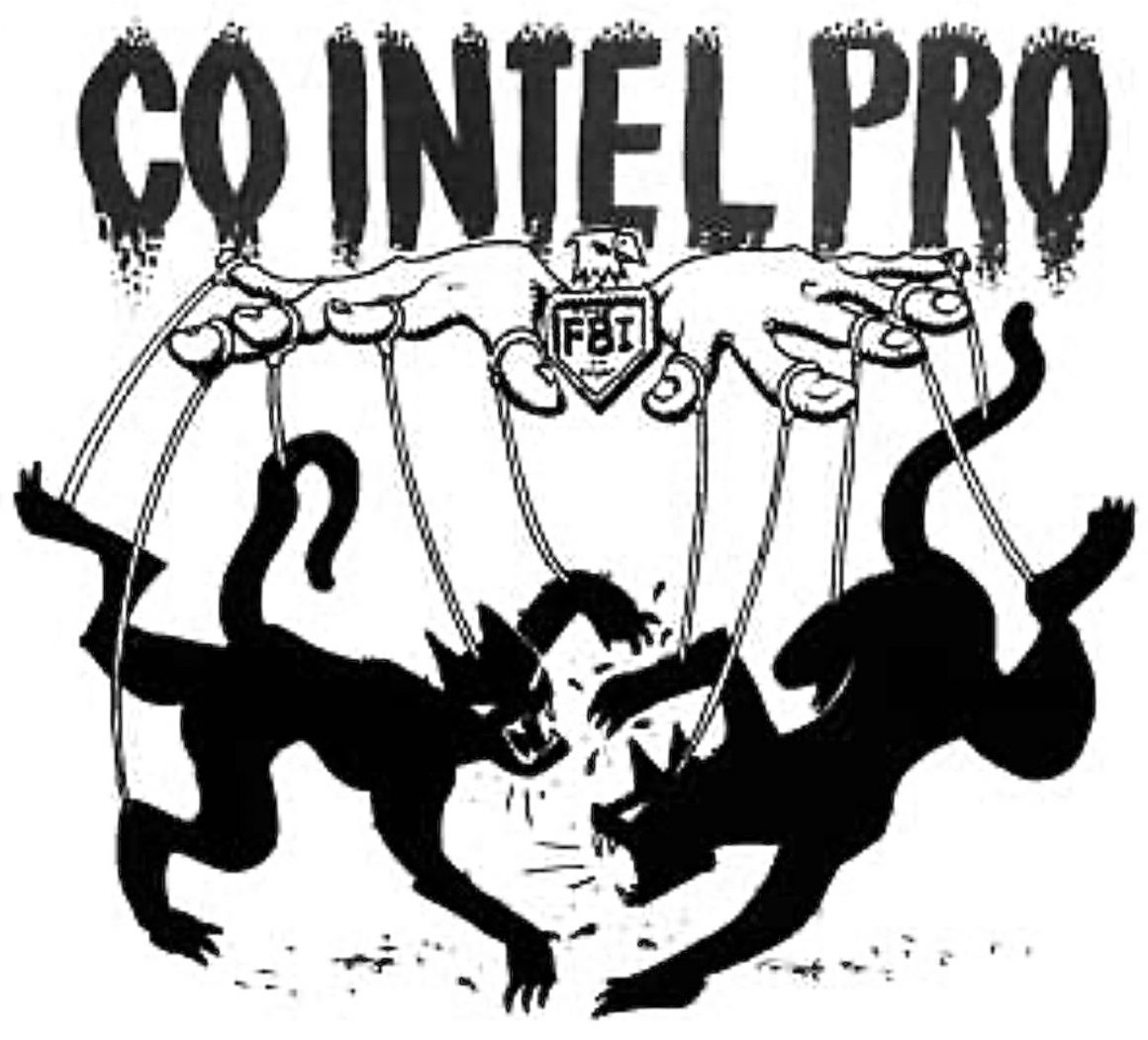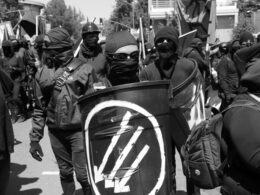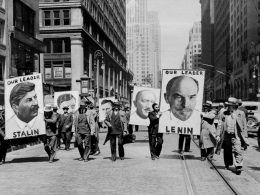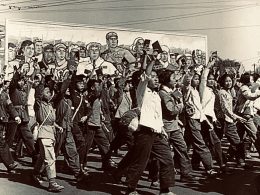One wouldn’t guess it, but the figure who’s been the biggest help to American Maoists is Henry Kissinger. He was the one who, after the paranoid rationale behind COINTELPRO (the movement infiltration project) and Operation CHAOS (the activist surveillance project) was revealed to be unfounded, urged President Nixon to continue these policies. The notion that the American communist, civil rights, and antiwar movements originated from foreign meddling was privately recognized by the government to be false. But Kissinger knew that combating “foreign interference” wasn’t the real purpose of these activities, that this was merely the propaganda which the U.S. intelligence community uses to explain why it wages war on political dissent. The real goal was to sabotage the efforts at bringing about proletarian revolution, a goal which Maoism was regarded by the feds as quite useful for advancing.
American Maoism is not like the Maoism within places like the Philippines, which can have strong anti-imperialist components despite their theoretical differences from the Marxist-Leninist ruling parties. The type of Maoism the FBI has promoted is nothing more than a red rebranding of anarchism. It combines the individualism of anarchism with the sectarianism of Trotskyism. Which makes it easy to see why the FBI created publications and organizations under the Maoist label, with the goal of discrediting Marxism-Leninism using the angle of “anti-revisionism.”
These were the early types of wrecker tactics when it came to weaponizing Maoism. What’s given Maoism great effectiveness at causing destruction for the American communist movement, especially in the social media age, is its use of struggle sessions—the tactic where ideological crusaders force themselves upon a target and shame them into complying.
Struggle sessions are a big part of why the members of the modern Communist Party of China colloquially regard Mao as “70 percent right, 30 percent wrong.” They acted as a way for the participants in the Cultural Revolution to subvert democratic centralism, carrying out aggressive ideological interventions when the ideas they sought to impose had not even been definitively decided as part of the party’s agenda. They harmed the integrity of the party, normalizing the practice of waging ideologically focused warfare on behalf of one’s own strain rather than exercising the restraint which was in the party’s best interests.
They momentarily sabotaged the potential for rigorous debate over what China’s next direction should be, preventing ideas which opposed Mao’s anti-market stance from receiving their fair hearing. China wasn’t able to implement the market reforms that sufficiently built up its productive forces, and therefore allowed it to be no longer a poor country, until Deng restored democratic centralism within the party and put an end to the struggle sessions.
In On Inner-Party Struggle, the Communist Party of China theorist Liu Shao-Chi explains why even if the ideas the struggle session participants were promoting had been correct, the way in which they went about trying to bring others to these ideas was counterproductive:
Some comrades still do not understand that inner-Party struggle is essentially an ideological struggle. Nor do they understand that only by achieving ideological unity can unity inside the Party be maintained and strengthened politically, organizationally and in action and that problems must be solved from the angle of ideology and principle before they can be solved from the angle of organization and action. It is, however, no easy matter to achieve unity, to solve problems ideologically and on the basis of principles, to reform others’ ideology and to correct others’ long-held principles, viewpoints, and prejudices. This cannot be done simply in a few words or through a simple “struggle meeting.” Nor can it be achieved simply by high-handed means or compulsory measures. This can only be achieved through painstaking persuasion and education, through various kinds of complicated struggles and through a considerable period of education, struggle and practice in revolution.
When the American Maoists appropriated this destructive practice, they turned it into something even more counterproductive than the Cultural Revolution. The Cultural Revolution was at least focused around class issues, whereas the struggle sessions of these red anarchists are focused around the issues which liberals prefer for us to think about in alternative to class. The U.S. Maoists, embroiled in a deeply combative ideological strain and detached from the class struggle that made Mao mostly credible, became the militant wing of the New Left’s “anything but class” school of thought. Their goal is to discredit the idea that class, race, and gender politics are intertwined, to the effect that the New Left’s followers become averse to conversations about class.
What does this misunderstanding of the nature of ideological struggle translate to in the social media age? It translates to toxic behavior as a policy. And this extends beyond the ways certain Maoist groups engage in physical attacks and vandalism against those they have sectarian feuds with. The ways in which today’s American Maoists tend to act online are infamously aggressive and unkind, and they’re enthusiastic to contribute to the phenomenon social media companies have created where swarms direct mass vitriol at targets. Social networking platforms, Twitter most of all, have deliberately introduced features that incentivize angry engagement and make positive communication harder, because this is how they maximize their ad revenue. And hyper-sectarian groups like American Maoists enjoy using this purposefully toxic, corporate-designed environment to cause pain.
These things about online American Maoists are true, but the direct evidence that exists for their malicious social media activities is anecdotal. Stronger evidence I can provide for the idea that today’s Maoist wreckers have the backing of the feds comes from the documentation of how modern COINTELPRO carries out psychological attacks against its victims.
These mentally focused attacks have the potential to be far more damaging to their targets than the mostly LARP-natured physical transgressions that Maoist radical liberals carry out. An emotional attack can drive somebody to anxiety or panic attacks, self-destructive decisions, and long-term depression or self-hatred. This psychological type of violence is exactly what modern COINTELPRO intends to inflict, and social media’s destructive nature provides it with a powerful weapon for doing so. That intent was revealed by the Blue Leaks, the documents that came out in 2020 about the tactics the feds had been using to combat the organizing efforts against Trump’s war crimes upon Iran and the police murders of unarmed Black people. In an email contained within the leaks, an individual named Terry Atkins explained just how malign the FBI’s psychological warfare strategy is:
The goal is to identify the victim’s strengths and vulnerabilities. With that information, perpetrators begin to publicly trivialize the target. Perpetrators are often fixated on the past [mistakes of the target]…they often publicly label targets as unstable, drug addicted, or threat to society either through misinformation or the repeated conjuring of past events. The goal is alienation and isolation. The next phase includes psychological attacks through cognitive and emotional infiltration. Organized stalkers attempt to invoke self-doubt through misinformation aimed at the manipulation of memory and perception often referred to as gas-lighting. Emotional infiltration includes the befriending or consoling the attacked individual and conversely initiate emotional aggression using language and implications. Physical attacks against property include breeches of privacy and invasion of personal space, pseudo-random acts of violence and poisonings.
The “publicly trivialize the target” part is indistinguishable from struggle sessions. Especially in the social media era, when the sectarian factions the feds nurture are able to initiate a “session” as easily as commenting on a post and signaling a swarming opportunity to their online circle. When these actors succeed at psychologically breaking somebody, what they do is render that person incapacitated for the moment, and (potentially) no longer able to pose a threat towards capital.
Several years ago, these actors did exactly this to me. Through repeated suggestions designed to instill panic, they implanted the idea in my head that I was “done,” that the world was forever alienated from me and that I would always be isolated from it. When this brought me to the point of mental breakdown, the only thing that kept me working for a while was how my mind is wired to stick to routines. They succeeded at manufacturing a sense of intense self-hatred in me, and I’m far from the only one who they’ve done this to. The way this story ends, however, is that precisely because they broke me, I ultimately became able to continue my work with a self-love that can’t be undone by any of their manipulation tactics. I no longer fundamentally fear having others become alienated from me, because I’m now aware that it’s impossible for those who I truly need on my side to abandon me. If those who don’t share my goals abandon me, that has no effect on whether I can have the impacts on history I seek to have. And those who do share my goals will stick by me, because they’re the ones who can accept my repentance for any mistakes and who can’t be fooled by any potential lies disseminated about me.
That’s the mentality which can save someone from becoming unable to impact history when they’re confronted by the attacks these actors direct. They encourage us to embrace a warped view of how power works, because they try to cultivate the perception that if you lose support from them, you’re done for. They seek to portray themselves as the sole ones who hold power, and as therefore capable of irreversibly destroying you on a whim. The mistake I made which made me initially vulnerable to being persuaded by this trickery was that I invested myself in the broad ideological strain which American Maoists draw their power from. That strain being Sakaism, the segment of the left which believes the white working class is incurably reactionary and breaks from the Leninist view that 1776 was a progressive historical event.
Luckily, I’ve never shared some of the fundamental dogmas of Sakaists, namely their notion that an entire section of the proletariat is fundamentally an enemy and their idea that no genuine modern socialist states exist. Because of this, I was eventually able to unlearn their narrative that 1776 was a “counter-revolution,” while maintaining my conviction that the United States now needs to be abolished in order for socialism to be possible on this continent. In other words, I came to grasp historical materialism, the concept that the presence of contradictions in an event doesn’t necessarily make that event reactionary. It’s the same dialectical logic that lets Marxists such as myself support Russia’s Operation Z due to its anti-fascist character, even though Russia is a bourgeois state.
When this step in my development happened, I became freed to act without any of my previous psychological constraints, which previously let these anti-Marxist forces control me under the implicit threat of social media-amplified struggle sessions. As class conflict intensifies with the accelerating collapse of U.S. imperialism, polarization in radical spaces is sure to increase. And the anti-Marxists are sure to both reveal their undialectical stances, and increase their efforts at intimidating others into complying with their demands. One can either join them, and become part of the strain which acts in service of the anti-Marxist psyops, or break from them, and join the effort to build an effective workers movement.
—————————————————————————
If you appreciate my work, I hope you become a one-time or regular donor to my Patreon account. Like most of us, I’m feeling the economic pinch during late-stage capitalism, and I need money to keep fighting for a new system that works for all of us. Go to my Patreon here.








